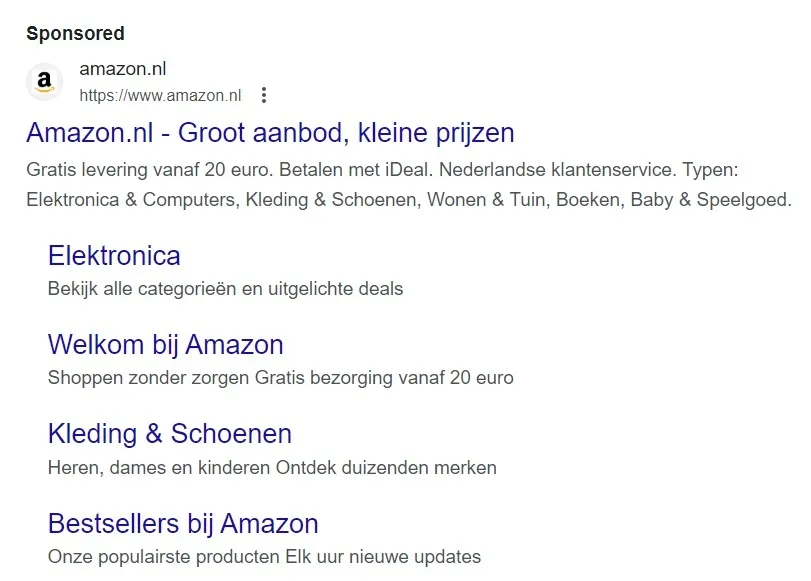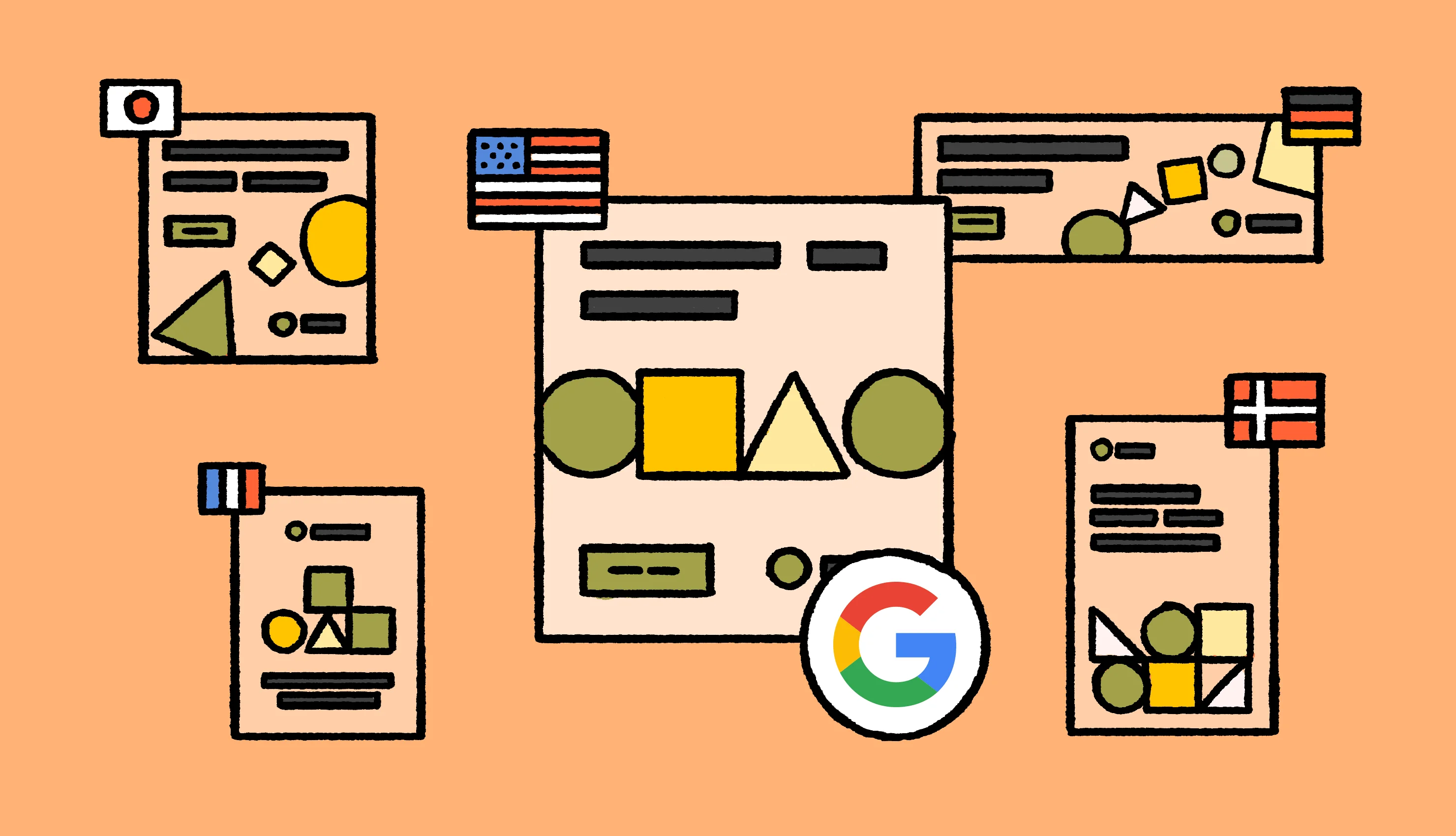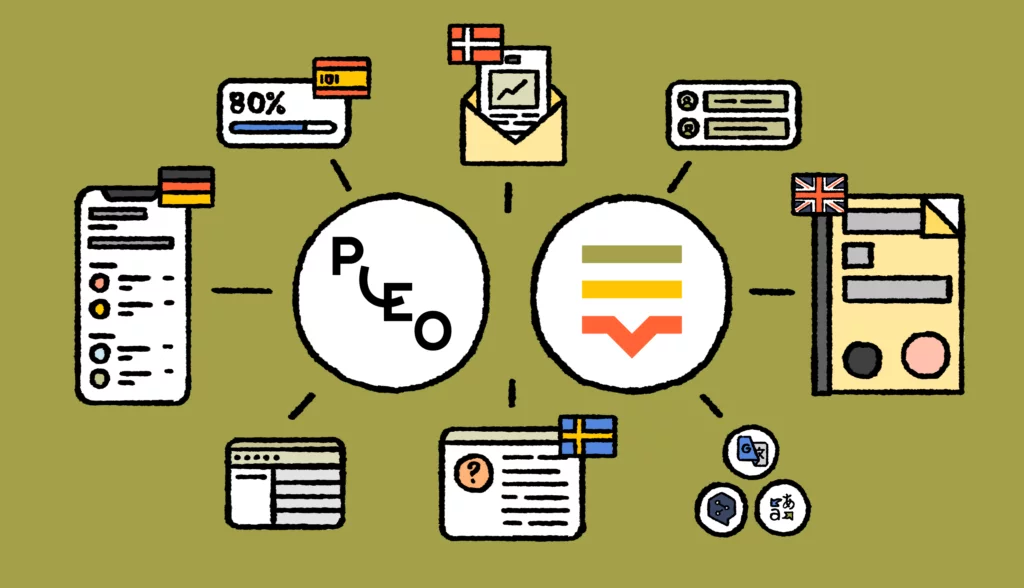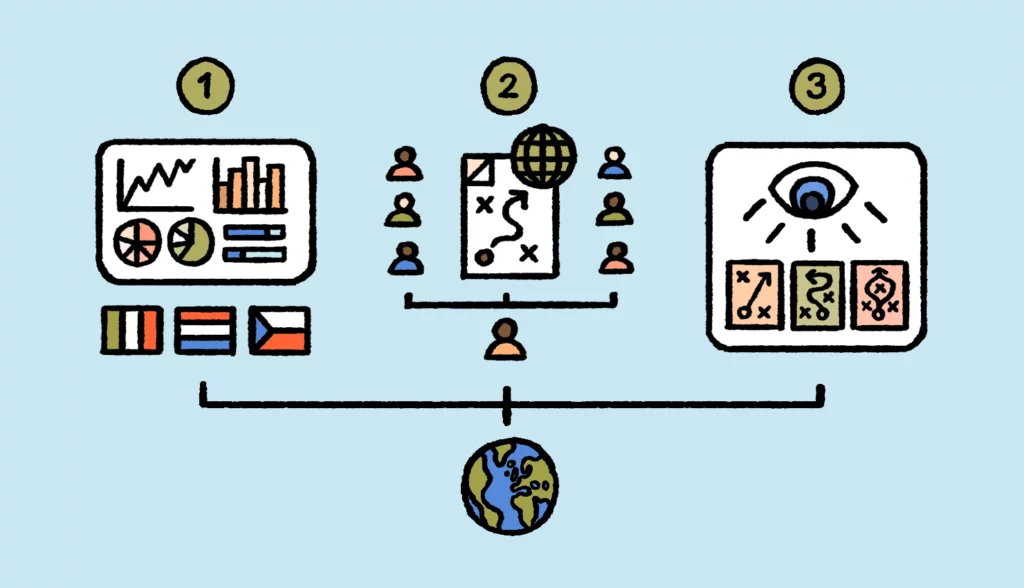Google Ads needs no introduction. It’s the first name on your GTM plan team sheet, every time, your go-to channel for generating leads, locally or internationally.
All of us performance marketers have heard the famous phrase about reaching “the right people, in the right place, and at the right time”. However, how you approach these people is an important question to answer as well.
Did you know that according to a report by Common Sense Advisory, 72% of internet searchers browse and shop in their native languages?
In this post, we’ll help you reach the 72%, by effectively mastering the Google Ads localization process for your team.
Benefits of Google Ads localization
It’s simple. By localizing your Google Ads you can:
- Expand reach by covering high-intent search opportunities
- Improve quality scores – when you are already operating internationally, but capturing localized searches without targeting them with relevant ads and landing pages
- Reduce costs – often times, localized keywords have lower competition compared to their English counterparts
Let’s look at some examples.
Cryptocurrency search in Sweden – more than 4x lower estimated low range bid:

Travel insurance in Spain – more than 4 x higher search volume in native language:

And it’s not just about the B2C segment:
Collaboration tools in France – 10x higher search volume and more than 2x lower estimated bid:

Now that you have the proof, let’s get you started right away.
Tip #1: Conduct adequate market research and prioritize what is already working
Before starting off in a new market, conducting proper research is essential.
Start by reviewing which markets are already working for you. Check the current purchasing behavior for a specific market (conversion rates, total revenues), search intent, and traffic volumes to identify the existing market’s potential. This is where localization could bring new qualified volumes because demand for your product or service is there already.
Next, use Google Market Finder – it is a great tool to explore new markets further. Besides insights to help narrow down which markets to target, there are a lot of tips around operational topics you may want to consider.
Last but not least, perform competitor analysis. There are different players involved in different markets – and you want to know everything about them.
Tip #2: Build keywords – don’t translate full lists
Localizing keywords into the native language of the markets you want to target is tricky. A straight translation of the full keyword lists won’t work for multiple reasons:
- Search behavior and intent is different in different markets
- Product interest may vary
- You may use different number of synonyms
- Search volume for localized long-tail keywords may be too small compared to their English versions, hence they’d become redundant
A proper localized keywords research is important for both – paid search and international seo. So, spend some time carefully reviewing your approach as it would benefit both channels.
Start by translating only the top volume keywords. Then, use them to build your unique list of localized keywords for a selected market with the tools that are meant for this purpose:
- Google Keyword Planner
- SEMRush or Ahrefs
- Google Trends
If you were targeting your campaign to the selected markets already, you may also want to check your search terms report. Even if there were only English keywords in place previously, the actual search terms may include localized keywords as well.
Lastly, perform a sample search in the local Google engine and look for related searches to enrich your list.
Tip #3: Set up a healthy list of negative keywords
As the old saying goes: “One key to a highly targeted campaign is choosing what not to target.” Negative keywords let you exclude irrelevant searches from your campaigns, so you only spend money on keywords that matter.
First, translate irrelevant terms that you want to exclude in all languages. You can easily use machine translation to perform this task – it’s fast and cheap (or even free).
Then continue topping up your list of negatives whilst you build your keyword list (using tools mentioned in the point above) – you’ll always find new irrelevant terms in the new market on the way.
Bear in mind that you need to add all the different versions of an irrelevant term, including:
- Singular and plural forms
- With and without accent marks (for example, cafe and café, are treated separately)
- Misspellings
- Different inflections (for example, Warsaw in Polish would be “Warszawa”, but “in Warsaw” – “w Warszawie”. Other variations include Warszawę, Warszawy, depending on the use case)
Negative keywords require a regular update, so your localized campaign’s search terms report is something to keep a close eye on.
Tip #4: Test Dynamic Search Ads before going all in
Dynamic Search Ads is a fast track to test localized campaigns. All you need is – at least 1 localized landing page, and a couple of description lines to get you started.
There are just two key things to keep in mind:
- Build landing pages around keywords that are relevant to what you offer. Avoid using broad language to highlight your unique selling points – the copy on the landing page will be used to capture relevant keywords, and you want them to match your product and service precisely.
- Build a comprehensive negative keyword list and keep the list updated.
Tip #5: Translate all important assets
It may sound too obvious to mention, but too often I have seen advertisers only translating the key ad elements. Landing pages, ad copies, but also sitelinks, callouts, price extensions – are all part of a successful Google Ads localization strategy. Make sure you localize them all to maximize the performance of your campaign.
Tip #6: Provide as much context as you can
Translation quality matters, and there is nothing more important in improving the quality than providing the right context to your translation team.
Going back and forth with translations in multiple languages to explain the intended meaning is a common pain point. Missing contextual details is the primary challenge when you have to address multiple questions – from different meanings for the same word, to where and how these phrases will be used together, etc.
How we handle context at Lokalise
Lokalise offers a variety of different options to provide context measures. The crucial point to note is that you only need to provide these once, and all the translators working on different languages will have access to them. This means you won’t have to answer the same question repeatedly and get stuck in going back and forth over multiple emails or files (even thinking about spreadsheets gives me creeps) for every single language.
Here are those that would be relevant for Google ads:
- Placing descriptions
- Adding comments, using a built-in project chat, to communicate with your translators
- Screenshots – you can upload ad previews directly to the platform and link the specific lines to the keys so they show up in the editor.
Visual context is often considered the most important type of context because it provides additional information that cannot be conveyed through words alone. This way translators can gain a better understanding of the intended meaning, and in return – you get better copy to run in your campaigns.
Tip #7: For creative approach consider transcreation
How to make sure the original copy resonates in different languages? Especially when it comes to staying within very strict character limits and still keeping the main campaign’s goals in mind? Transcreation helps exactly with that. In simple terms it is a mixture of translation, creation and copywriting.
Transcreation is more flexible, allowing translators (or transcreators) more play with the message than literal translation would allow.
Overall for advertising localization oftentimes it is about approaching a new market not with a translated copy, but with a recreated copy from scratch. There are just too many aspects to consider – from cultural to business, with new offerings, currencies, and different buying decisions.
Let’s look at Amazon ads in the UK and the Netherlands.


They both use “low prices and large selection” in their headline, though in a different order. Plus, each ad focuses on location specific delivery services and offers.
Communication styles, types of offers, and even call to actions work very differently in different markets, so you want to take your marketing localization strategy very seriously.
Having worked with brands from various verticals, travel, beauty, fashion, mobile apps, and many others, I have seen all-inclusive offers work best for one market vs. a variety of activities for another, or free delivery for one vs. a new collection for another. Even low prices may sound good in one market, but indicate a low quality in another.
Listen to local experts, keep researching and testing to find the best approach to the new market you enter.
Tip #8: Keep character limits in mind but don’t let them limit you
This links to the above point, but does require separate attention. Staying within the character limit for headlines, descriptions, and callouts is already a challenge for an English copy. Translating the copy into Spanish, French or German may lead to further 20%-35% text expansion.
The advice here would be to give translators the freedom to change the copy or recreate the copy, but so that it still delivers the whole ad’s objective.
Let’s look at an example.
[ENG] Free next day delivery – 22 characters
[SP] Entrega gratuita al día siguiente – 33 characters
[SP] Entrega gratis en menos de 24h – 30 characters (Free delivery in less than 24h)
How can Lokalise help with character limits:
- First, you can set any character limit on keys (single on multiple in one go) to restrict the maximum number of characters.
- Second, use Lokalise AI to shorten your translations automatically
Tip #9: Ask for back translation when translators intend to change the original copy
Whether it is about staying within the character limits or simply recreating the copy to better resonate with the audience – ask for back translation. This will ensure the new copy still delivers the right message and is not misleading. Below is a good example when it did not work – “less development” is not exactly the same as “less work for developers”, right?

Tip #10: Build glossaries
A glossary is a list of commonly used terms, their definitions, and their translations. Typically, these include your brand or company-specific words or phrases, industry terms, non-translatables, abbreviations. For Google Ads, that may also include specific keywords that you want to target, and hence cover in your copies.
Building glossaries right from the start will save you a lot of time in the long run.
Tip #11: Organize campaigns by targeted languages and test
With Google Ads you can target one, multiple or all languages in a single campaign. Besides migration and historical reasons, as global economic and cultural integration increases, we see more multiple languages spoken within a single country’s borders.
It is important to note that Google would not select your localized copy automatically, so you have to organize campaigns by languages, and there are also certain tests you may consider to implement.
Let’s take Switzerland as an example – you would have 3 campaigns, each targeting a different language.
- Campaign 1: Targeting German
- Campaign 2: Targeting Italian
- Campaign 3: Targeting French
Each running ads and keywords in their corresponding language. If you try to mix all 3 languages – your German ad might get served to a user that speaks Italian and vice versa. So, it’s a big no-no.
If your ads and overall approach does not differ between German in Switzerland and German in Germany, you may consider targeting both markets in the same campaign. This would help simplify the account structure and it’s definitely worth testing.
You may also test native vs. English ads for other languages spoken in the country.
For example, although German is the official language of Germany, there are many different other languages spoken in the country. If you are targeting this market, but have no resources to localize your keywords and ads in all the different languages, here is the idea to test.
- Campaign 1: Targeting German language in Germany with German only ads
- Campaign 2: Targeting multiple languages (English, Turkish, Arabic, etc.) in Germany with German vs. English ads
It is obviously not ideal, but – better than nothing.
Tip #12: Test English vs. native ads for international keywords
Which ads to serve for a “crypto” search in Sweden (that by the way has higher search volume than its local version – “kryptovaluta”)? The answer is – test. Add these keywords to a separate campaign and test English vs. a native ad copy to see which works better. As simple as that.
Frequently asked questions
What’s the best way to efficiently manage translations for my ad copy and landing pages?
- Use a translation management system. Besides creating a single source of truth for all your translated content, you would also get access to all the tools to improve quality and productivity – from context sharing and translation memories, and more.
- Use a professional translation service to ensure accurate translations. Professional translators have the expertise and cultural knowledge to effectively adapt the copy.
- Have native speakers review translations to ensure they accurately convey the intended message.
What are some common mistakes to avoid when localizing Google Ads?
- Failing to research the target audience: audience’s language, culture, and preferences to ensure ad relevance and effectiveness.
- Translating too literally. This can result in the loss of the original meaning and lost opportunities. For example, a clever play on words in the original language may not translate literally, but a skilled translator could come up with a creative alternative.
How do I approach multilingual markets where multiple languages are spoken in the same location?
Dedicate an individual campaign to an individual language. E.g. If you are targeting Canada, you would want to create 1 campaign targeting Canada in English and a separate campaign for Canada targeting French. Do not combine languages and ad copies in different languages in the same campaign.
How do I handle customer support and inquiries in different languages and cultures?
Use automated real-time chat translation and create a multilingual knowledge base.





